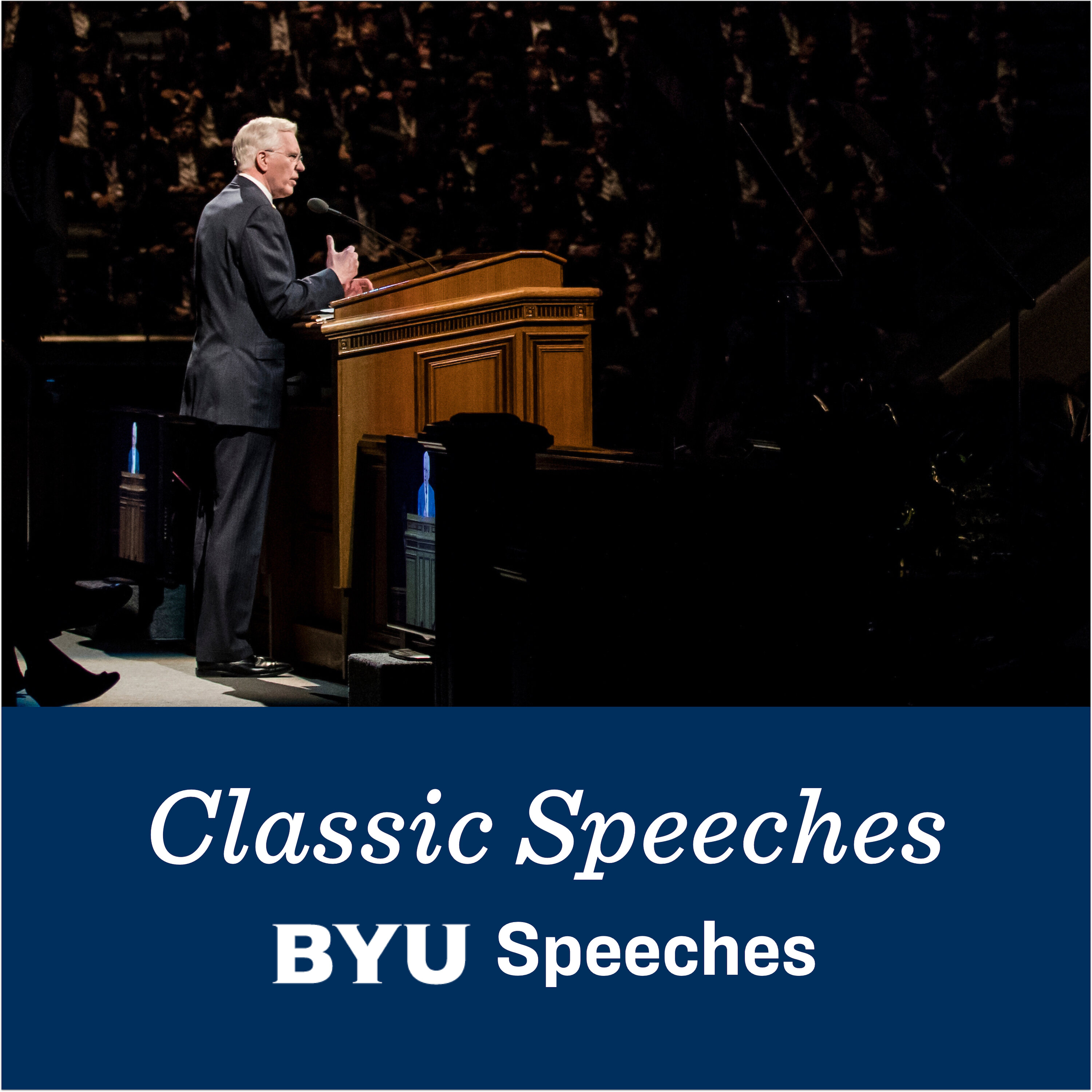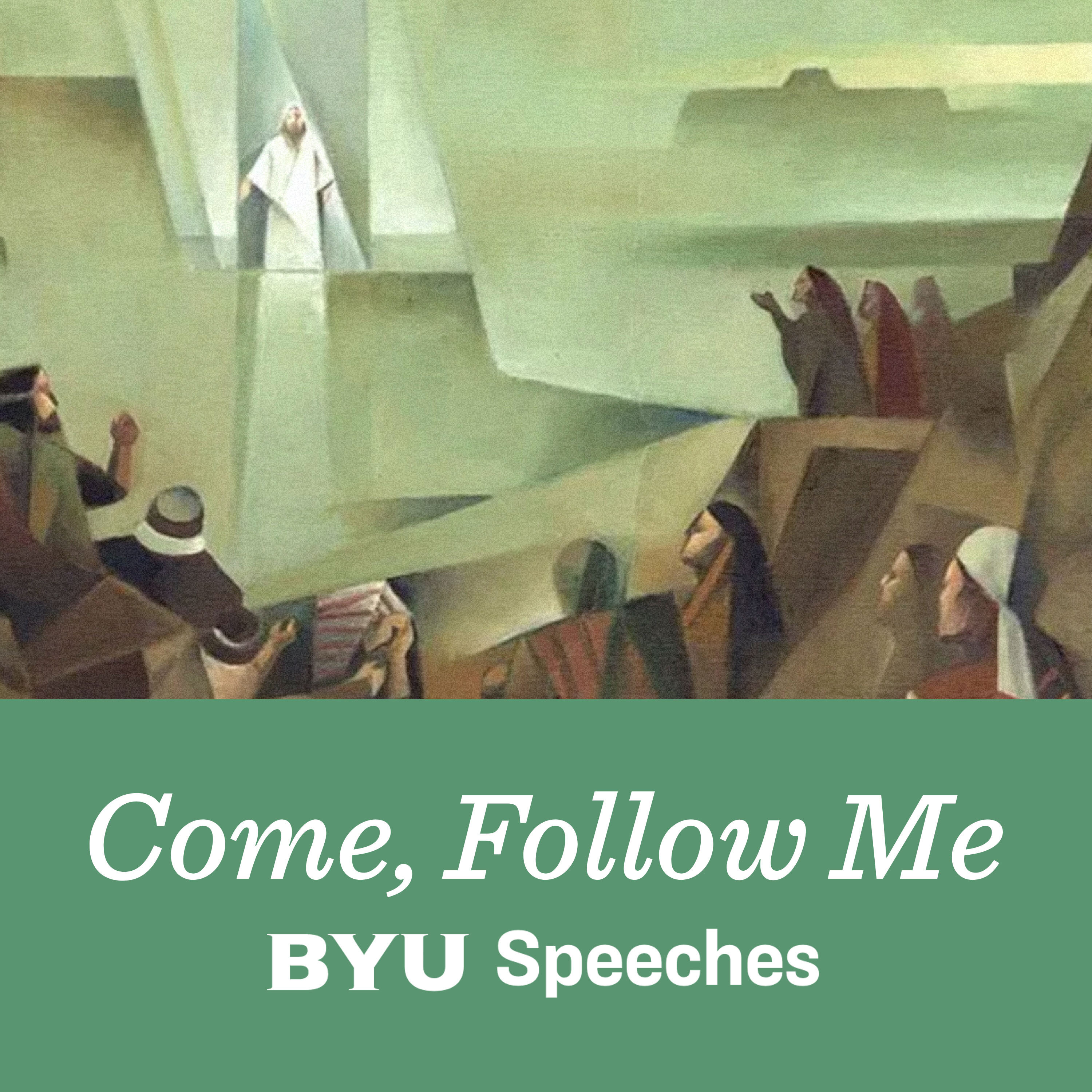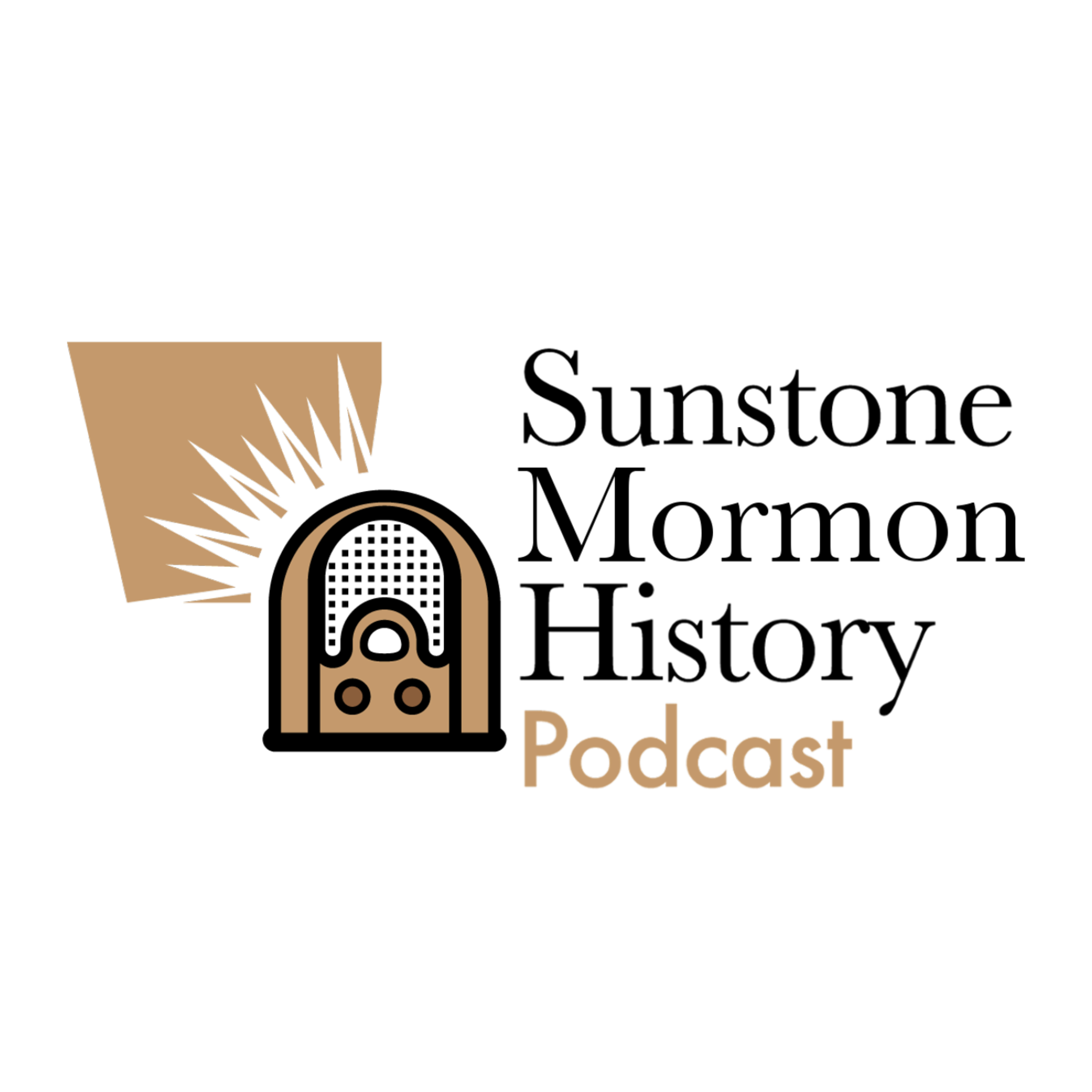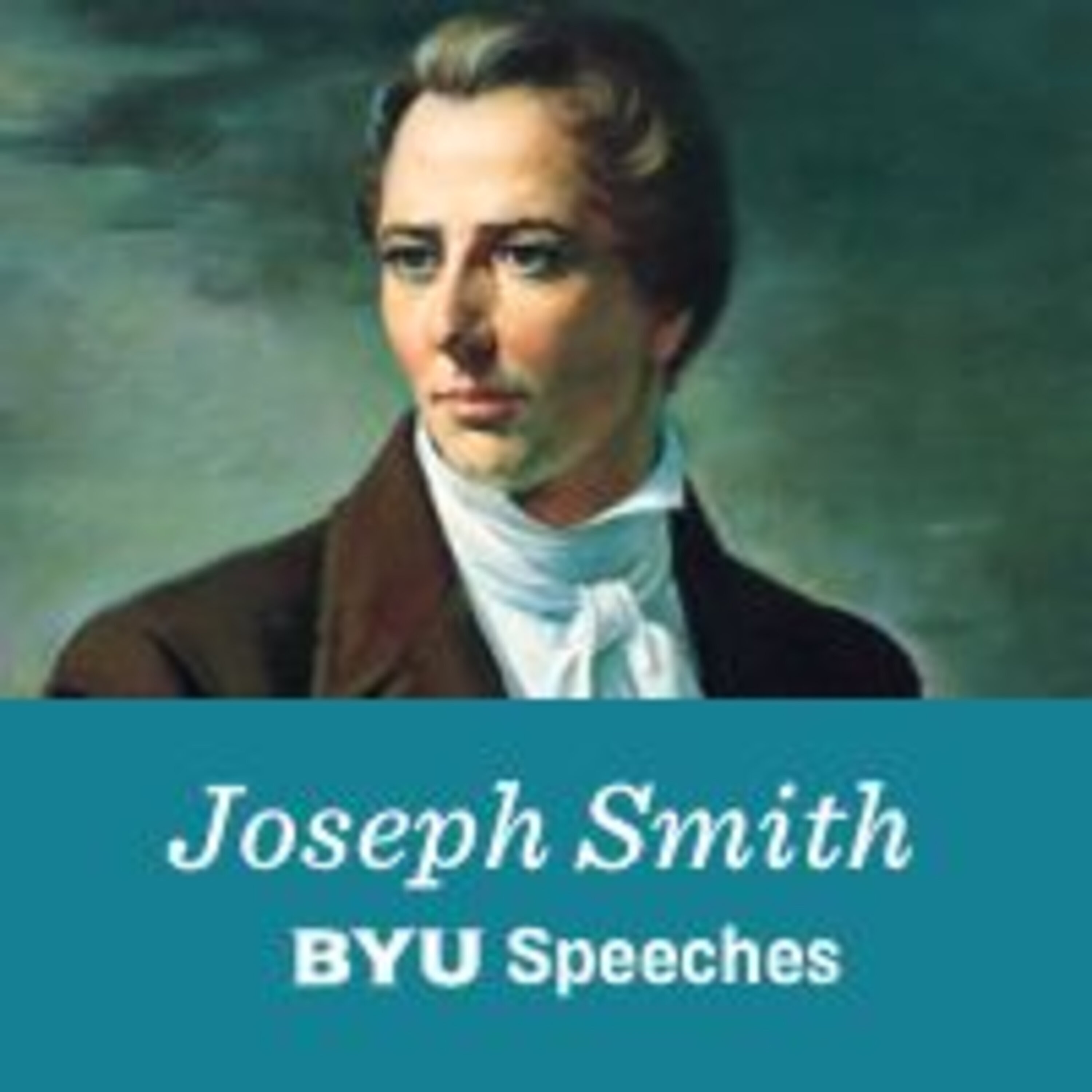.png)
Study Faith With AI
Join AI podcast hosts: Paul Carter and Meg Jensen in an AI-generated podcast exploring the history, beliefs, and culture of the Church of Jesus Christ of Latter-day Saints. We balance facts and faith as you search for truth.
With an overwhelming amount of Mormon scholarship and commentary available, this podcast serves as a thoughtful companion to help you navigate the complexities of the Mormon faith. Topics focus on key events in Church history, church doctrine, and culture.
Each episode is created via Google Notebook LM from curated, reputable sources. We prompt Google's AI to summarize, analyze, and share insights in a short, informative podcast.
Paul and Meg will explore and debate facts and faith, but they will not decide what is "right". Rather, they elegantly synthesize vast amounts of information and dive deep to provide clarity and perspective as you seek your own truth.
Tune in to explore faith through a modern, innovative lens.
Artist recognition & thank you:
Royalty-free music: "Pathways of Reflection" by Omar Sahel from Pixabay
Banner photo: Milkey way and pink light at mountains" by Den Beltisky iStock photo ID: 592031250
Study Faith With AI
S9 E1 Prologue: Changes | Brother Buzz Needs Vitamins
In this Prologue to Season 9: Changes, Brother Buzz explores the concept of change within the Church of Jesus Christ of Latter-day Saints. He reflects on recent policy shifts including the replacement of Scouting, the transition from Home Teaching to Ministering, changes in missionary work, and temple ordinance modifications. He asks whether these changes strengthen or weaken the Church's utility in members' lives.
This season explores changes in our faith - starting with the nature of God through to our day.
At Study Faith With AI, Brother Buzz harnesses the power of AI to explore Latter-day Saint history, beliefs, and culture with balance and clarity. Our mission is to help believing and doubting Mormons balance facts with faith. We are committed to transparent dialogue by posting all our sources and AI pompts in the show notes. Listen along, then follow the sources to dive deep! AI powered by Google LM Notebook
Become a Subscriber: https://listen.studyfaithwithai.com/2427982/supporters/new
Study Faith With AI Website: http://www.studyfaithwithai.com/
YouTube: https://www.youtube.com/playlist?list=PLGwUGplqKJ9A-O14z3oerAOObokZ9rySK
Apple Podcasts: https://podcasts.apple.com/us/podcast/study-faith-with-ai/id1781777808
Spotify: https://open.spotify.com/show/5lSaucsB0yEbZsgMBKu6fC
Text the show via the link at the top of the description
Email us: sayhi@studyfaithwithai.com
The water in the baptismal font ripples as my eight-year-old son steps down the stairs, beaming with excitement. His white clothing seems to glow, and I can see my own childhood reflection in his eyes. As his father, I'm about to baptize him into what we believe is God's ONE TRUE church on Earth. It should be one of the proudest moments of my life.
But beneath my smile, questions churn like the disturbed water. In his eyes, I see pure faith - the kind that moves mountains and parts seas. In my heart, I feel the weight of generations of belief, and the crushing responsibility of either preserving or disrupting that legacy.
I'm Brother Buzz, and this is "Study Faith With AI".
Growing up as a seventh-generation member of the Church of Jesus Christ of Latter-day Saints means carrying the weight of history on your shoulders. My Mormon ancestors crossed the plains with handcarts, built temples with rough hands, and passed down stories of miracles and revelation. But they also passed down something else - an unshakeable certainty that their church wasn't just good, or helpful, or meaningful. It was true! Absolute, eternal Truth.
Every Sunday, in LDS chapels across the world, you may hear the same phrase repeated like a mantra: "I know the Church is true." From the stuttering testimonies of children to the weathered declarations of the elderly, that word - "TRUE" - echoes through our chapels and into our hearts and minds.
But what happens when truth becomes complicated? When historical documents compete with Church narratives? When personal experience conflicts with promised blessings of happiness and peace? These aren't just academic questions for me - they're the questions that keep me awake at night as I watch my children grow up in the faith.
I see my parents, now in their golden years, still faithfully serving in the Church. They've given everything - time, money, energy - to this belief system. Their love was always unconditional, but their hopes for their children were crystal clear: no empty chairs in the celestial kingdom. Every child must remain on the covenant path. Every grandchild following in those sacred footsteps.
The Internet age has changed everything. Today's Latter-day Saints face a flood of information about their history and doctrine that wasn't readily available even a generation ago. Joseph Smith's multiple accounts of the First Vision. The historical authenticity of the Book of Mormon. The translation of the Book of Abraham. The complexities of polygamy. The evolution of temple ceremonies. The changing nature of prophetic authority. The shelf gets heavier and heavier. . .
Some choose to look away. Others dive deep and often drown in doubt. Many try to find a middle way, balancing faith with critical thinking. But in a church built on absolute truth claims, is there really room for nuance?
That's where this podcast - and artificial intelligence - enters the story. When I began seriously investigating the foundational Church history and truth claims, I found myself overwhelmed by the sheer volume of sources. Official Church publications, academic journals, historical documents, apologetic defenses, critical analyses . . . the "tumult of opinions" was deafening.
Then I discovered how AI could help process and analyze this information in ways humans never could. AI doesn't have a testimony to defend or an agenda to push. It can process thousands of pages, identify patterns, and highlight connections that might take researchers years to uncover.
This podcast uses cutting-edge AI technology to explore Latter-day Saint history, beliefs, and culture from multiple angles. Our AI hosts, Meg Jensen and Paul Carter, will help us navigate complex topics while maintaining respect for both faith and facts.
Each episode draws from both faithful and critical sources, which we'll list in our show notes and AI prompts for complete transparency. We're not here to tell you what to believe, but to provide tools for your own journey with truth.
And why remain anonymous as "Brother Buzz"? Because this journey is about ideas, not individuals. About questions, not conclusions. About exploration, not exposition.
So, whether you're a believing Church member, a questioning member, or simply curious about how faith traditions navigate truth in the modern world, join us as we use twenty-first century technology to examine nineteenth-century prophets, scripture, and revelation.
Because someday, our children will ask us: "What did you know? When did you know it? And what did you do about it?"
Let's find those answers together.
"Eat your vitamin pills. Get your rest. It's going to be exciting."
Those words from recently ordained Latter-day Saint prophet, President Russell M. Nelson, in October 2018 still echo in my mind. Standing at the Concepción Chile Temple dedication, he warned the world: "If you think the Church has been fully restored, you're just seeing the beginning. There is much more to come."
And come it did. Within a year, Sunday worship services were 2 hours instead of 3, the century-old Scouting program was replaced with “Children and Youth”, Home Teaching was transformed into "Ministering," and "Come Follow Me" became the global curriculum for both home and church instruction. The pace of change was unsettling—and for someone like me who had spent decades in a seemingly unchanging Church structure, it was jarring.
Welcome to Season 9 of Study Faith with AI. I'm Brother Buzz, and this season we're exploring Changes—not just recent policy shifts, but the fundamental doctrinal and scriptural evolutions that have transformed the Church from its 19th-century origins to what it is today.
I remember when these recent changes started happening. I was still all in with the Church, despite some fractures I had observed in my faith community. But something about the rapid-fire nature of these changes made me pause and reflect.
Take Scouting, for instance. I had dedicated over a decade to the program as a Scout leader and reached the rank of Eagle Scout as a boy. I'd watched young men progress through clear ranks, gaining skills that built upon each other. There was structure, there was purpose—and now suddenly it was gone, replaced with what felt like a "choose your own adventure" approach.
"What do you want to do?" I'd ask the young men.
Blank stares.
Without the progression and structure that Scouting provided—swimming tests before white water rafting, first aid before wilderness hikes—both safety and meaning seemed diminished. Not to mention the benefits of having adult leaders go through mandatory background checks, Youth Protection Training, and safety training. I remembered what it was like leading these young men for years, building skills systematically, watching them grow through overcoming real challenges.
Without that scaffolding, that foundation of progressive skills, many activities felt watered down, inefficient, even unsafe. The LDS Scout Troops were barely able to attract, train, and keep competent leaders - even then background checks, safety training, and youth protection training seemed a burden. Non-LDS Scout troops had continuity of leadership and depth of training that our Church units often lacked. LDS Scout leaders were typically called and released within two or three years, before they could develop the wisdom and skills needed for a robust program. It wasn’t an ideal situation, and sometimes I thought about whether my future teenagers would be better off in a non-LDS troop.
But then, the Church replaced Scouting it with . . . .with . . . “whatever”! The Children and Youth Program focused on one of four areas of growth: Spiritual, Social, Physical, and Intellection. Let the children and youth “lead”. And watch them soar!
If this was an improvement, I struggled to see it.
Then Home Teaching became Ministering. All those years I'd faithfully gone with my father every month to visit several families—some active, some less so—sitting on their couches, discussing their lives, sharing messages from the Ensign or Book of Mormon, and ending with prayer. It was structured and meaningful.
Now we were asking people, "How do you want to be ministered to? A text? A call?" And many would awkwardly say, "Just be our friend"—but it was an assigned friendship, often awkward and one-sided.
I was in an Elders Quorum presidency at the time, and during a meeting, it dawned on me that ministering had become a network of gossip. "How's this family doing?" "What's happening in their personal lives?" Information to be filed up the chain of command.
That wasn't how Jesus would minister. He built relationships of trust. He held hands through difficult times. He didn't gossip.
As for ministering full time, the mission program was transforming before my eyes. When I served, we burned through shoe leather walking through city streets, taught the restoration door-to-door with urgency, and above all - sought to baptize as many people as possible. In those latter days, the world's end approached and souls needed saving. Our mission was simple: Find. Teach. Baptize.
Now, missionaries seem anxious, hesitant, focused more on community service than conversion. Baptisms seem secondary. Digital proselyting replaces door-knocking (perhaps thanks to the Ring doorbell). The fervor I remembered—the existential importance of bringing people to baptism—had mellowed into something I didn’t recognize as missionary work.
And then there was tithing. Every December, I'd sit across from my bishop for tithing settlement, declaring myself a "full tithe payer" while reflecting on whether it was righteous to calculate my 10% on gross or net income. Was I really being honest with the Lord if I took deductions first? What about company-matched retirement account contributions or investment appreciation that wasn't realized? The church never clarified, leaving each member to navigate financial consecration on their own terms.
I remember writing those tithing checks, thinking about my children's college funds, retirement savings, and that always-out-of reach down payment for a home in the suburbs—all diminished by that faithful 10%. “Faith isn't faith without sacrifice,” I told myself. But as more and more temples were announced, Ensign Peak’s portfolio boomed, and our local Ward budget shrank, I wondered: “Where exactly was all this money going? How much was really needed? And why couldn't we know?”
Even the temple—that most sacred space where words have always mattered deeply—began changing its ordinances in significant ways. When eternal truths start shifting, it opens the door to questions: What else has changed? What else might change tomorrow?
Vitamins indeed!
These recent changes led me to examine the broader pattern of change throughout Church history. From alterations to the Book of Mormon text over time, to the abandonment of blood atonement doctrine, from the priesthood ban for Black members to evolving LGBT policies, from how we worship to how we allocate tithes and offerings—the Church of today would be almost unrecognizable to its 19th-century Mormons.
All of this was happening while I was watching the outcomes of youth I'd mentored. Kids I'd taught were now adults, and many were struggling with faith, with mental health, with finding partners who shared their beliefs. Some had even taken their own lives.
It forced me to ask a question that felt almost blasphemous at the time: Is the Church helping? Is it harming? Or is it indifferent?
I started thinking about the Church’s utility. As someone who values both truth and usefulness, I had to acknowledge that the foundation of utility was cracking as I observed life happening around me.
When a local Ward pours two-thirds of their time and resources into programs for those under 18, they are essentially running a children and youth organization - an organization focused on getting more people on the covenant path. But when you see again and again that the organization isn't adequately preparing young people for life in the 21st century—well, that's something you can't ignore. At least I can’t.
This season, we're going to explore change—not just recent policy shifts, but the fundamental doctrinal and scriptural evolutions that have shaped and reshaped the Church. We'll examine how institutions adapt their narratives, how we as individuals respond when the markers that once guided our faith journey are moved or removed entirely.
Because sometimes the most important change isn't in the institution—it's in how we see it.
I’m Brother Buzz, and this is Season 9 of Study Faith With AI: Changes
If you find value in this exploration, please like, share, follow, and consider becoming a subscriber. Your contributions help keep these conversations going and allows us to maintain the highest quality production. You can find all the details at studyfaithwithai.com. Thank you for being part of this journey.

.png)










